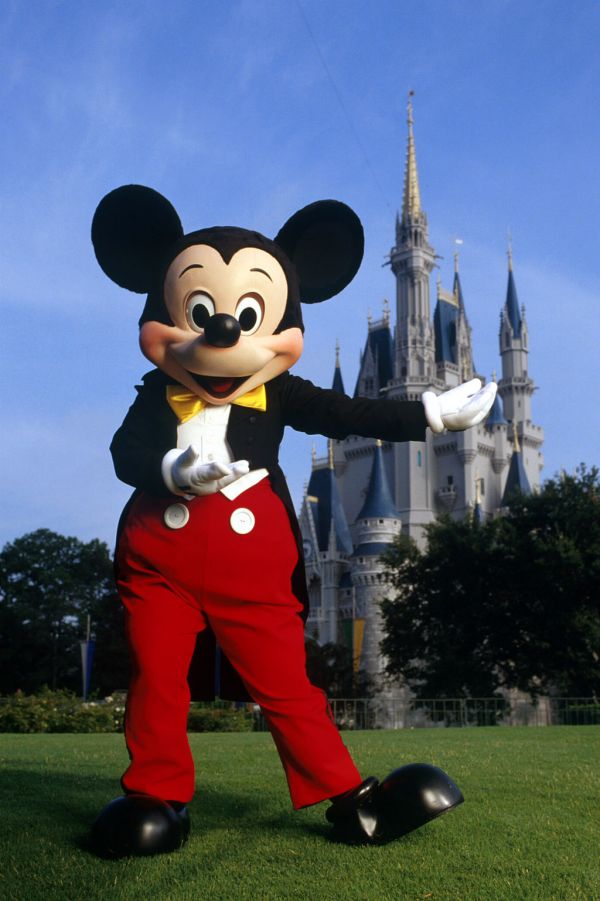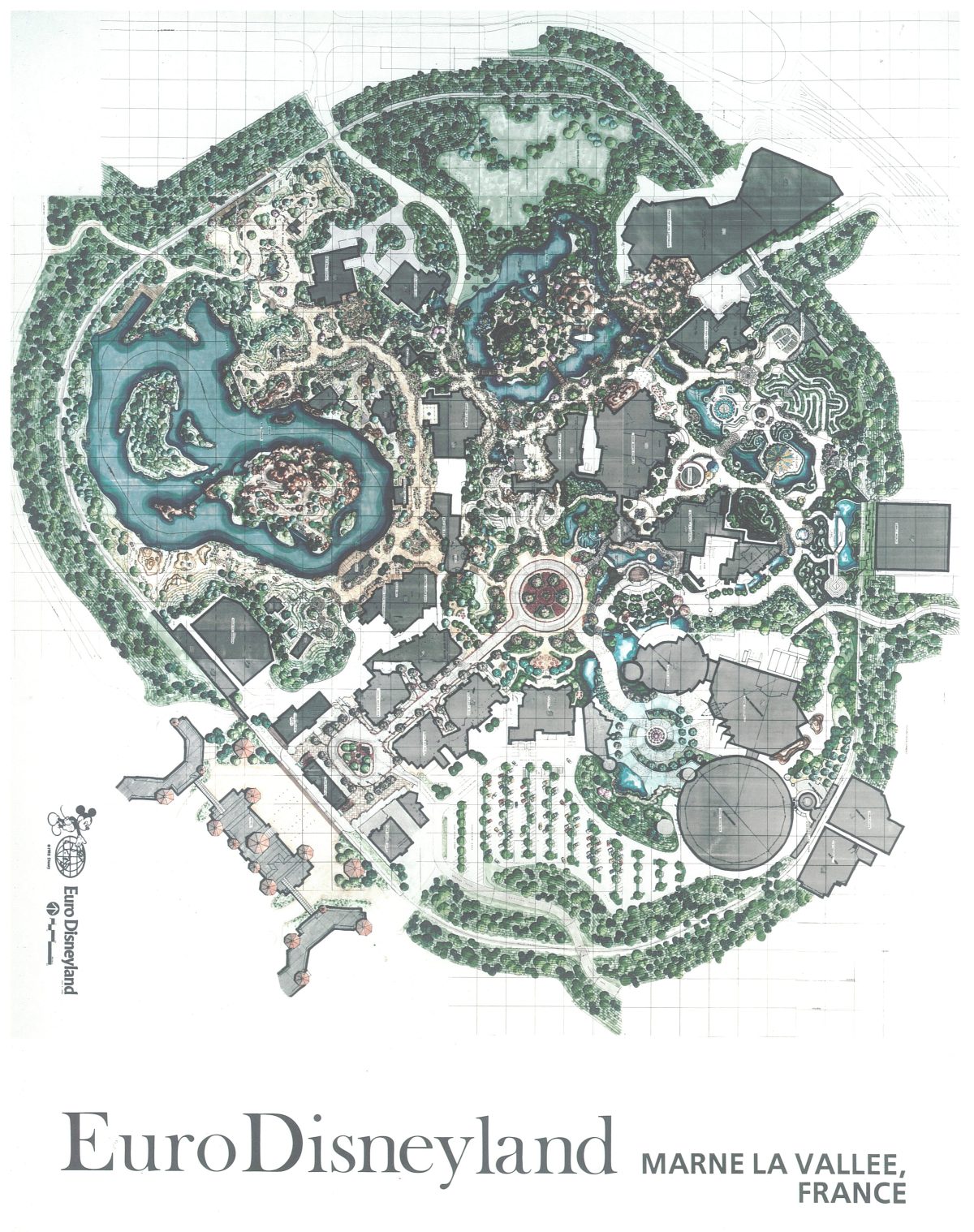From early 1987 until late 1991 I was an Area Development Coordinator for Walt Disney Imagineering. Originally we were a small team of 5 people whose job it was to design EuroDisneyland (as Disneyland Paris was known back then). Our role was to design everything except the rides and buildings. We focused on design of the landscapes and site amenities as well as ensuring that the civil works, buildings and rides were coordinated with each other and with that landscape.
Disney’s goal for the park was to ensure that it resembled the original park in Anaheim California, rather than Disney World in Florida. The park in California was site planned and designed by landscape architects (including my late friend Bill Evans who was Walt’s right hand), whereas the park in Florida, we were told, was designed primarily by civil engineers and operations staff. Disney felt the California park was successful in part, due to its more human and intimate scale.
We divided the park up into areas of responsibility based on ‘the lands’. I was responsible for Fantasyland and Discovery land. My colleague Shari Van Dorn was responsible for Frontier land and Main Street USA, and our colleague Mark Schirmer was responsible for Adventure land. All three of us collaborated on the design of the ‘hub’. The central roundabout at the end of Main Street USA that delivers visitors to the gateways for each land including the renowned Castle.
![IMG_1209[1]](https://publicrealmadvocate.com/wp-content/uploads/2016/02/img_12091.jpg?w=840)
After a year and a half, we were asked to move to Paris to work directly with the local design firms who had been retained to deliver final working drawings. We were there for almost three years and worked with hundreds of architects, civil engineers, landscape architects, show producers and operations staff.
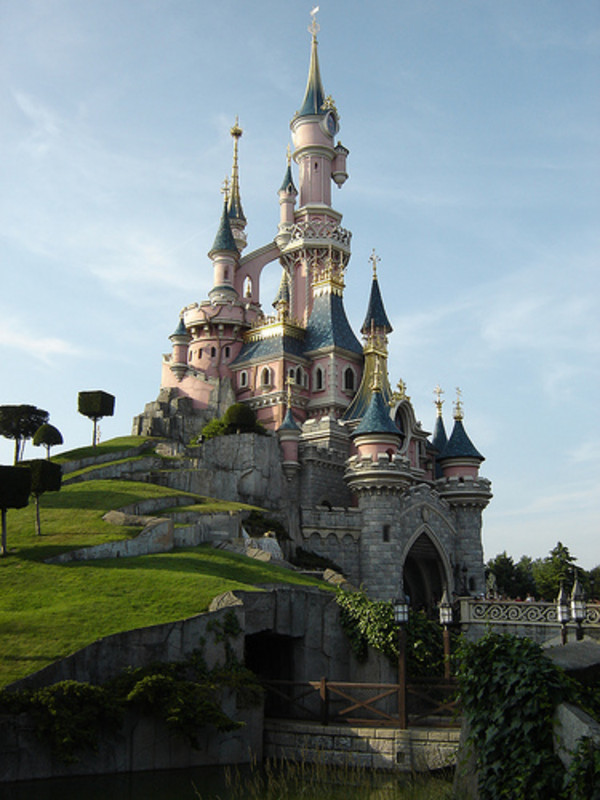
Much of what I learned during that time has been of use in my work that followed. Here are a few ideas that particularly struck a chord and have been of value to me professionally for the 25 years of work to follow. Every single one of these ideas can be translated into traditional master planning, urban design, park design and landscape architecture projects:
- Every design decision should be measured by its impact on the quality of the guest experience.This is to say that everything we designed had to reinforce the narrative of each fantasy. The landscape is highly themed and tells the visitor part of the story. It is not just about the architecture and rides. The visitor is to be immersed in the story. That includes paving patterns, fencing, furnishings, walls, steps, plantings, fountains, bridges, lighting and signage. Even sound speakers are hidden from view.
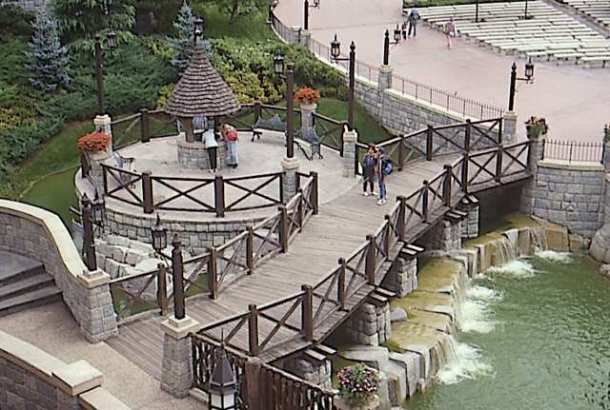
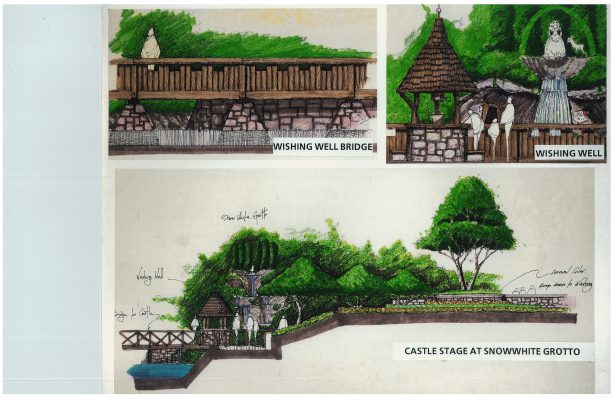
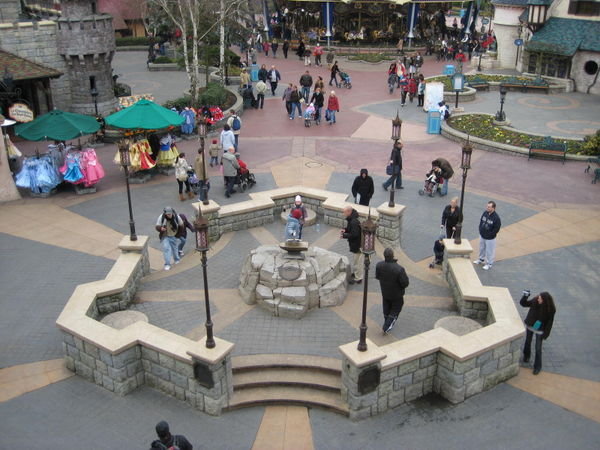
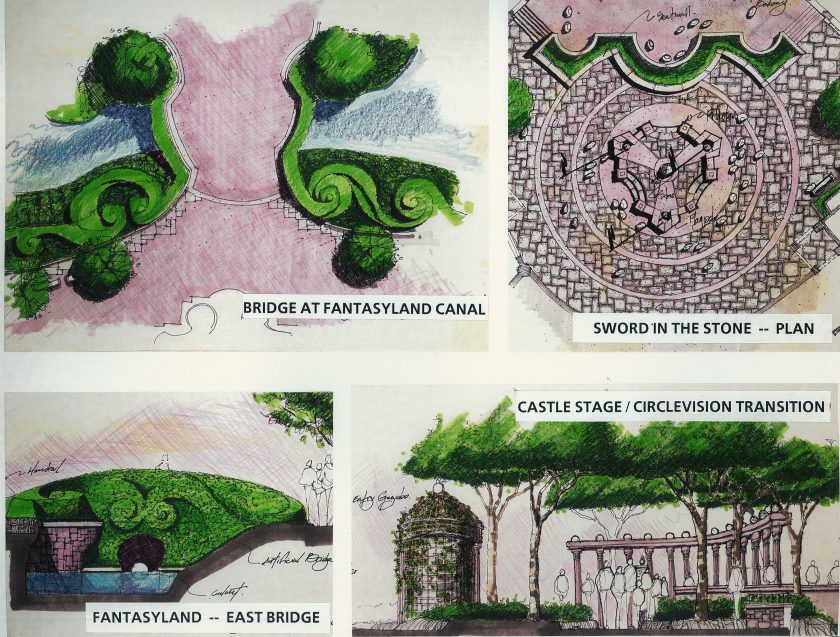
- The greatest threat to a quality guest experience is the dreaded ‘visual intrusion’. Anyone who has been to a Disney Theme Park will know that everything you see is part of the experience. What you DON’T see is a labyrinth of service buildings, maintenance yards and parking lots. You will see no buildings that aren’t part of the narrative. You will be completely unaware (even on the tram that encircles the park) that the dark rides are in fact, great big plain boring old boxes.
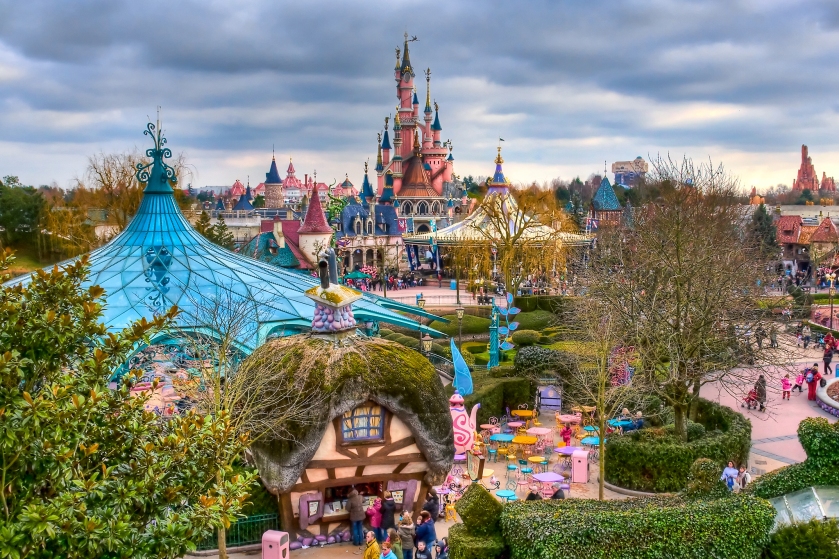
- The Guest Entry Sequence One of the major moves that defines Disney’s success is the care they place on the guest entry sequence. This principle relates to the notion that from the moment a guest leaves their car, or the train, their experience of the park should be sequential and immediate. But not static. It should morph from one themed context to the next. It is designed to draw you into the park and make you feel it’s magic from the very first moment to the last. It is entirely about what people see and what they can do.
- Collaborate A Disney theme park is an extremely complex design undertaking. Those responsible come from a wide range of disciplines and professions. Ignore them at your peril, but don’t hesitate to defend your ‘better idea’. . Here’s a short list of the key disciplines involved:
- Show Producer. (top design boss for each land)
- Show Set Designers.(all highly themed elements)
- Area Development Coordinators
- Operations Managers (vital as they are the ultimate owners)
- Architects
- Landscape Architects
- Engineers (civil, electrical, structural etc)
- Horticulturalists
- Ride Engineers
- Project Managers (post design and contracts)
- Avoid the time-wasting trap of ‘the meeting’. While this rule wasn’t followed particularly well in Paris, it was in Glendale. Almost every meeting was held standing up. When you sit down in a board room for a meeting, people get comfortable and chatty. If the meeting is held over a stack of flat files without chairs, it goes remarkably quickly!
- Build Models The drawings that we were producing in Glendale were first used as the base for the construction of a 1:50 scale model of the entire park. Including back-stage elements. It was built on tables so that you could go underneath with a periscope and view the park from the visitors point of view. A number of design changes resulted from the construction of that model.
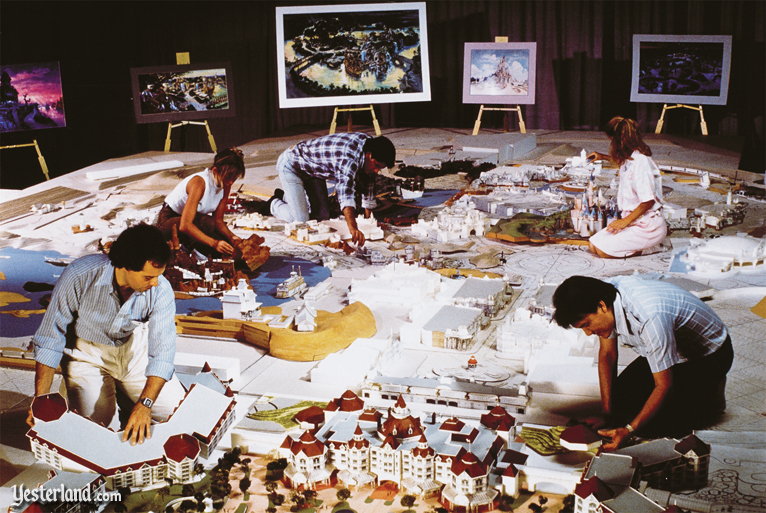
- Think ahead One of the more complex projects within the project, was the design of the Wonderland Labyrinth. Essentially a huge hedge maze themed on the ‘Alice in Wonderland’ story. Combined with show-set pieces and leap-frog fountains, it was sure to be a welcome addition to the Disney portfolio of experiences. It occurred to us early one of the key infrastructure elements of that piece would be the Yew hedges and that their effect would be greatly enhanced if they were grown in advance. In the same pattern as the ultimate maze. They would then be ready to go on day one. And so Imagineering contracted a firm to grow the hedges, off-site, in advance. Laid out in the final pattern so there would be no seams or blank spots.
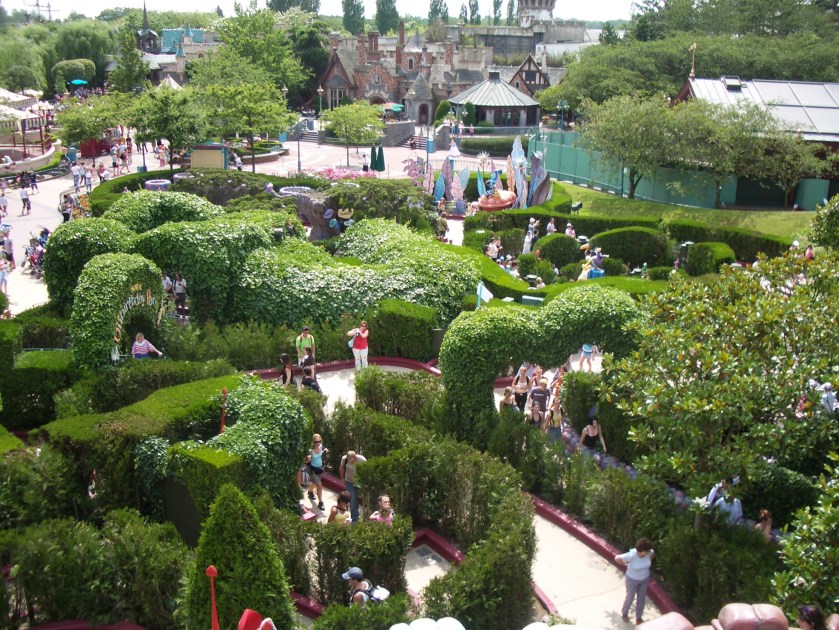
- Look for Problems. Especially those that aren’t apparent. We were designing the park at the advent of AutoCAD. We had a colleague who joined us in France who was adept at CAD. He was mapping the final locations of the buildings as well as the geometry of the monorail which encircles the park.
Rides like Pirates of the Caribbean are what known as dark rides. They take place entirely within buildings. The monorail actually enters some of those rides in order to enhance the monorail experience. Our colleague Dave discovered that the layout of the monorail would miss the opening into Pirates, by almost two metres. He found the mistake just because he was diligent. Would have been an expensive fix.
- Merchandising Most people don’t know this, but Disney generates the vast majority of their park revenue not from the gate, but from merchandising. The genius of it however, is that it is not in your face. It’s subtle. The stores that line main street USA. The themed cart vendors that you can find at every turn. The restaurants when you want to take a break. People spend far more money inside the park than they do to get into it.
- Play Design is fun. We do it because we love it. If you bring a playful heart, good things will happen. Like Mickey Mouse showing up one day in our offices and then having him sit down in the chair opposite my desk for a chat. Or going to a special event at the studios in Burbank only to meet Pluto. In the flesh (as it were). Imagineering makes their work environment FUN.
